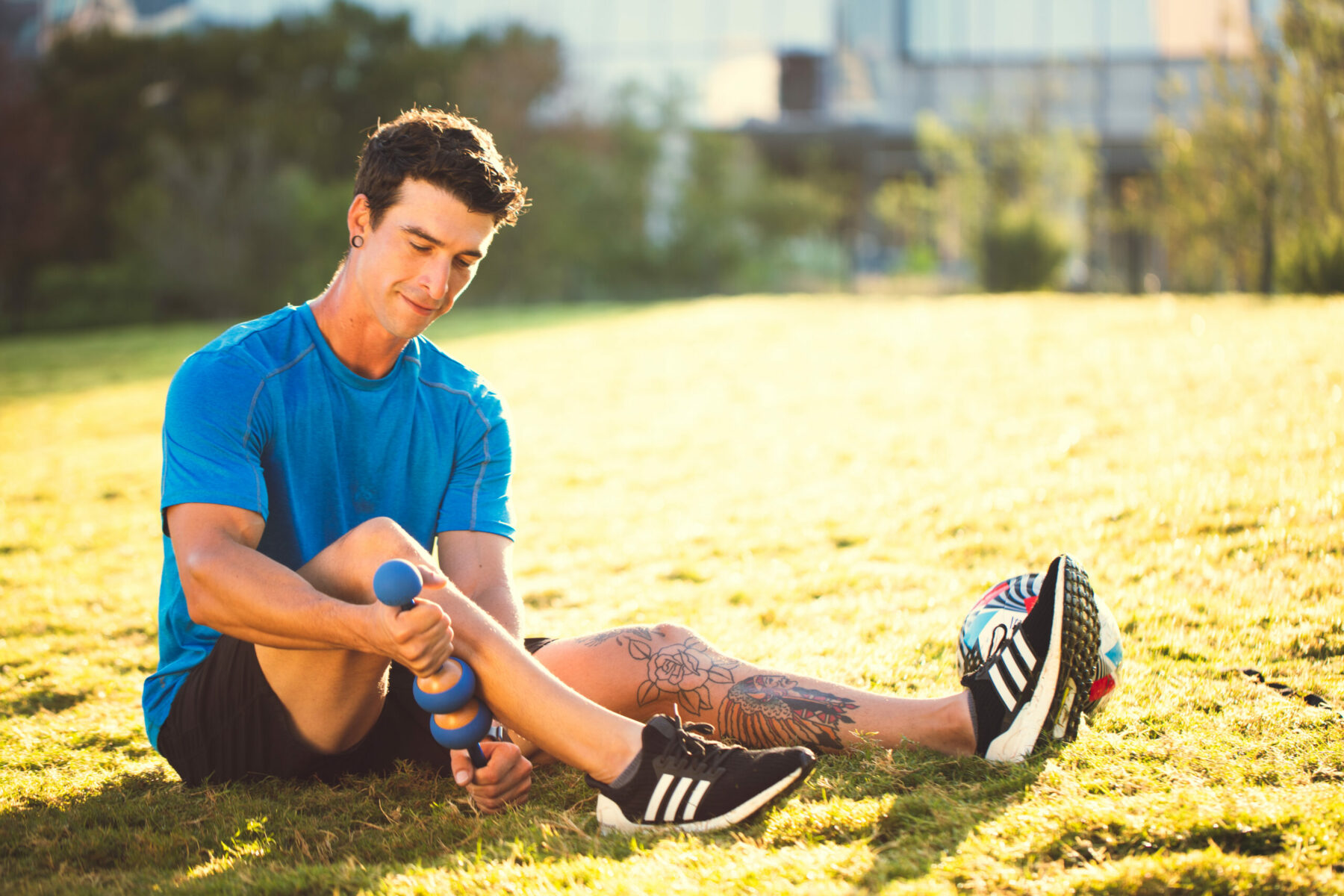10 Benefits of Rolling Muscles

In today’s world, we are reimagining our fitness routines to bring positive change, feel good in our bodies and reach further with new fitness goals. Maybe this means you have joined a boot camp, found one of Austin’s well-known fitness facilities or committed to a new training app connected to your wearable device.
If so, you have most likely experienced a fitness professional or sports coach recommending that you “roll out your muscles” as part of your warmup or recovery regime. This could mean rolling your muscles with a foam roll, massage roller or unique soft tissue release tool that applies compression into the muscle and fascial layers of the body.
While many of us listen to this advice, it often leaves us wondering what is actually happening within the body and whether soft tissue release (or in more clinical or therapy terms, “myofascial release”) is the right choice for you.
So let’s look at what research and the experts tell us about the benefits of rolling out your muscles.
1. Increased flexibility
One benefit of rolling your muscles is that you might experience increased flexibility that can increase changes in the length and tension in muscles and connective tissue, such as calf muscles, hamstrings, quadriceps, chest musculature and iliotibial band. Rolling can increase blood flow and the warming of tissues, as well as help regulate neural mechanisms that affect muscle tone and result in a “softening” or “letting go” in the muscles.
2. Increased joint range of motion
It also provides an increased joint range of motion, which improves the freedom of movement, perception and movement quality allowed around joints such as ankles, knees, hips and shoulders. Improved flexibility allows for improved motion as well as movement control around the joint.
3. Improved movement quality (neuromuscular efficiency)
Rolling muscles improves your movement quality, which allows for better movement control as well as long-term muscle and connective tissue health that benefits performance and developing physical capacity for sport or physical activities. This is also vital in reducing injury risk.
4. Increases relaxation
There are mental health benefits as well, including an increased sense of relaxation. Rolling muscles will help to relieve your body from chronic and static positions that you experience such as sitting at the computer for long periods of time, standing in poor posture or holding positions during repetitive activity, which can include fixing your upper body position during cycling or running.

Courtesy of MOBO.
5. Improved sleep quality
Having improved sleep quality is an underappreciated aspect of recovery when it comes to fitness training, long workdays and other daily activities. Soft tissue release improves relaxation, reduces stress and quality of sleep. Better sleep quality can support better brain and immune function as well.
6. Decreases pain
Rolling muscles can decrease pain by desensitizing the neural pain response, improving vascularity and blood flow, and decreasing friction while warming the tissues. By decreasing the aches and pains prior to exercise, you can naturally move with a better position and posture to avoid your body having a guarding or protective response.
7. Decreases delayed onset muscle soreness (DOMS)
After you push your body in training or perform prolonged activities that overload your muscles and fascia, rolling your muscles can help decrease DOMS. Incorporating soft tissue release can improve your overall exercise experience and help you stay on track with fitness and sports performance goals.

Courtesy of MOBO.
8. Relieves muscle tension
Rolling your muscles can relieve muscle tension through neural mechanisms in the muscle and fascia that regulate muscle activation and tone. Our myofascial system is a combination of structural tissue, neural mechanisms and fluid that provides integrity to our body positions and movements. Having excessive muscle tension in a muscle area can throw off the balance needed to reduce the risk of injury and support movement, activities and recovery.
9. Reduces muscle fatigue
Rolling muscles can help reduce muscle fatigue so that you can recover more effectively and be consistent with your training and performance efforts. Muscular fatigue can change your perception of effort during exercise within a single set of an exercise or during the training activity or session.
10. Reduces recovery time
After a sport or fitness training activity, rolling muscles can help reduce your recovery time. This can support both the mental and physical aspects needed to improve physically, gain benefits of training and skilled practice, and feel positive during the experience.
Rolling out muscles and using soft tissue release strategies can be efficiently incorporated into your warmup, movement preparation and recovery portions of your exercise, activity or sports training. A pro tip is to look for a soft tissue release tool that is easily portable, provides guidance with app and web support, and is multifunctional to make the most out of your equipment investment and provide the best opportunity for consistency.
As an exercise community here in Austin, fitness programs and training groups are leading the charge with smarter mobility solutions to support our active lifestyles!
About the Author

Diane Vives, MS, CSCS is the Vice President of Education for MOBO. Diane is a leader, public speaker and trusted resource on human movement, functional training and strength and conditioning. Her vast experience includes owning and managing human performance centers, speaking to fitness, rehabilitation and sports performance organizations around the world, and developing progressive education and curriculum to elevate the fitness and healthcare industries. She is currently a Lead Instructor for Functional Movement Systems and has served on the Board of Directors for the National Strength and Conditioning Association and on the Advisory Board for Under Armour Performance Council. You can learn more about Diane and MOBO at www.mymobo.com.






